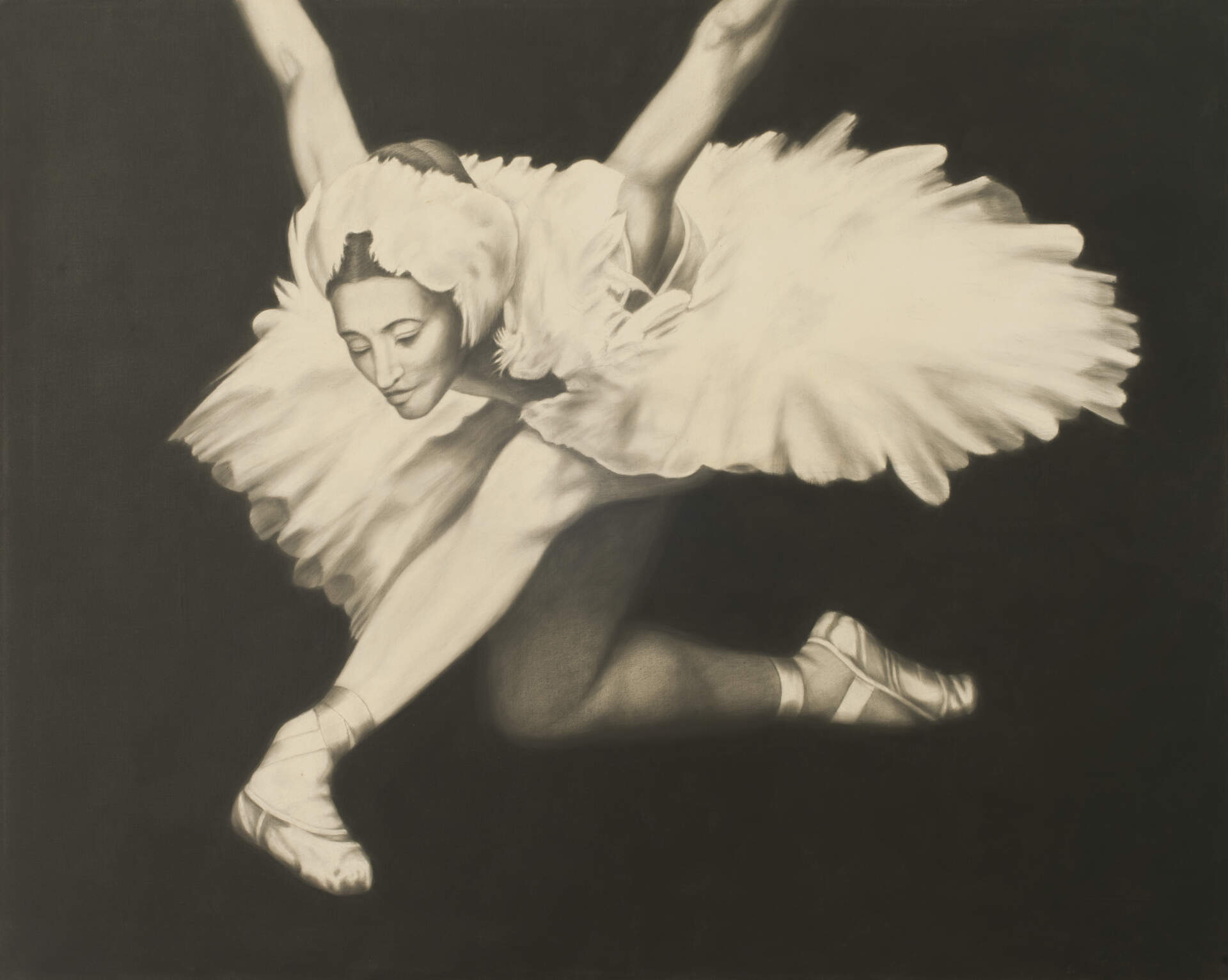Joseph Piccillo (1937-2022)Untitled (Ballerina)
unknown date
oil on canvas
48 1/4 x 60 1/8 inches
Gift of the Artist, 2016
Inspired by the graceful movements of swans, the famous Russian ballerina Anna Pavlova asked choreographer Michel Fokine to create a solo dance for her to perform at a concert at the Mariinsky Theatre in 1905. He created The Swan which was set to Camille Saint-Saëns’ cello solo, Le Cygne (The Swan),” from Le Carnaval des animaus (The Carnival of Animals). Dressed all in white with a feather headdress, the ballerina dances on pointe as if gliding on water. She floats and slumps, arches backwards, drifts, and hovers in place, moving her arms like elegant wings. In her final moments, she drops in this position before collapsing slowly in a death swoon. This four-minute dance about the end of life has since been interpreted as The Dying Swan in Tchaikovsky’s Swan Lake as a metaphor for parting lovers. It lives on in more contemporary interpretations in different media. Dancers are exceptional athletes whose strength makes their actions appear effortless. Joseph Piccillo’s representation as one of his Edge Events, instills a disquieting effect by cropping the dancer’s arms out of the picture frame. She collapses in a black void, her elegance truncated, her eyes closed to an inevitable ending.—NW
